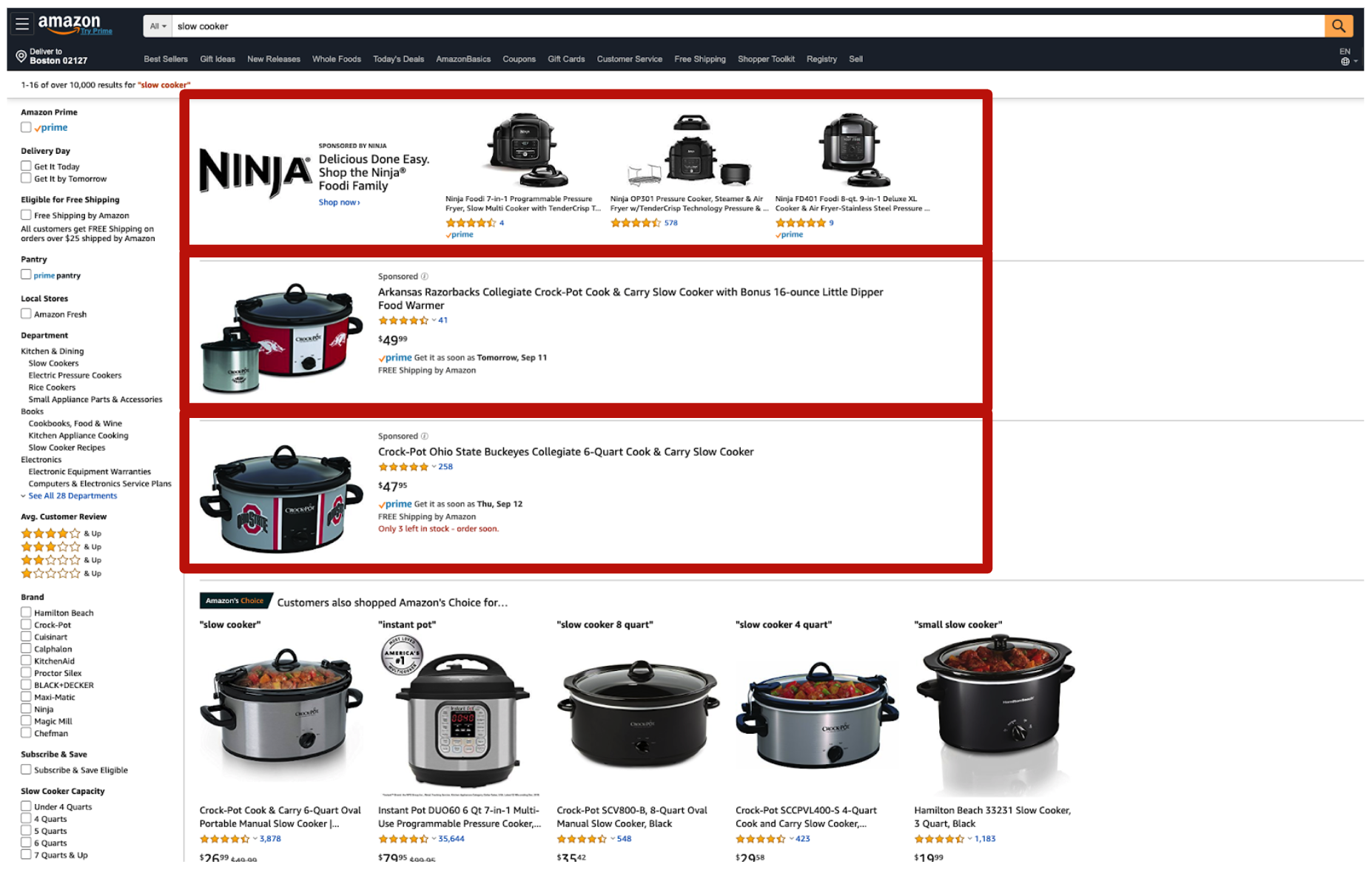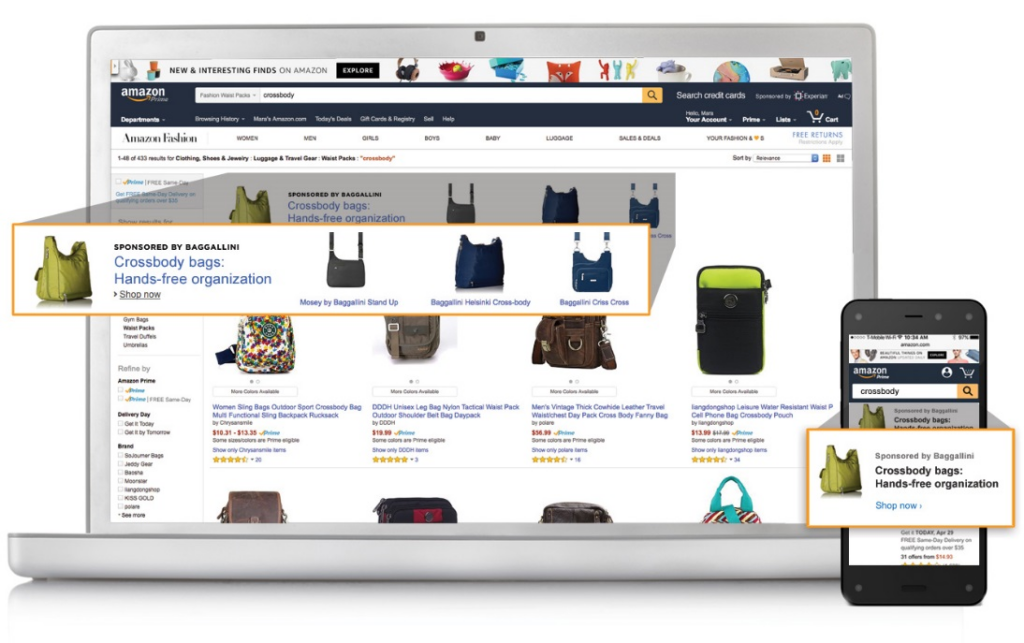Note: This article was originally published on Search Engine Land.
By: Andrew Waber
It was 10 years ago, Jeff Bezos famously quipped that “advertising is the price you pay for having an unremarkable product.” As it relates to Amazon today, that logic holds as much water as any of these fine-looking sieves found on Amazon itself. In 2019, the retail site is largely a “pay to play” platform when it comes to defending and driving market share growth. This reality necessitates that Amazon sellers commit to advertising spending on the platform, but also do so based on expected conversion rates and search volume in order to preserve profitability while gaining market share.
How We Got Here
Two contributing factors have driven Amazon to its current state for sellers. First, across the most popular search terms on Amazon the share of total conversions for a given keyword, on average, heavily weight towards the first few results on the search page. This fact may have been true in the past, but its significance today becomes crystal clear when looking at Amazon’s own brand analytics data. Over the month of August, across the top million search terms on Amazon, the top three organic results captured an average of 62% of conversions.
Dovetailing with this behavior are the increasing prevalence of ads on Amazon search pages. Across nearly every popular search term across nearly every product category on Amazon, multiple Sponsored Product listings exist above the fold, along with, to a lesser degree, a Sponsored Brands placement at the very top of the page. Using the organic conversion share as a proxy for user behavior on the search page overall, those top paid placements are capturing a substantial share of total conversions.

All this being said, when it comes to user behavior on Amazon, not all categories are created equal. Anecdotally, think about how many options you would consider, and how long you would take to shop, for a 2-pack of ketchup bottles online versus a pair of pants. These differences bare out in the underlying data, which I studied as part of my work at Teikametrics.
How Advertising Varies by Category on Amazon
To get this category-specific picture of Amazon advertising, I examined the paid and organic listings present on the first page of results across the top one million search queries on Amazon over the month of August 2019. The search results data for this analysis was captured over the course of the final week of August 2019, and the category segmentation was based on the top category suggestion from Amazon listed in the sidebar for that search.
I focused on top 20 physical goods categories by the number of queries present in the top million search terms. I then examined the number of ads present in the top 10 combined paid and organic results, in addition to any Sponsored Brands placements, on a per term basis, expressing this on a 0 to 100 index. The category labeled ‘100%’ had the most ads in the top 10 results, with all other results being expressed as a percentage of that total.
For context, I also provided the average top three organic conversion share of each term analyzed in the category, as provided by Amazon Brand Analytics, along with the average price of all products on the underlying search results page. The analysis underscores the level of variance across verticals when it comes to the number of ads at the top of a search results page on Amazon.
Categories more aligned with hobbies, specifically “outdoor recreation,” “arts, crafts and sewing,” and “automotive” had the highest number of ads in the top 10 terms. This is likely due to brand affinity being a major driver of purchases generally in these categories, and many players outfitting across an entire category itself. You may know someone who always buys Coleman or North Face camping products, as one example. For brands, attracting those shoppers and getting them introduced to their brand can create subsequent, related purchases across their wider catalog.
Categories with comparatively lower rates of ads in the top 10 results were more aligned with high consideration, and more accessory-laden categories. These include “toys and games,” “computers and accessories” and “baby products.” In each of these categories, consumers are looking for the “right fit” for their needs based on a wide range of criteria (e.g. age of the child, color preferences, cord length etc.), and may place those needs above sticking with a certain brand, or be more brand agnostic in general.
Both fashion categories stand out, with relatively high ad rates, but lower Sponsored Brand rates. While these are both competitive marketplaces on Amazon, the fact that consumers aren’t as likely to convert on the top results makes those top placements potentially less valuable. These categories are also home to a particularly large number of resellers, who cannot purchase Sponsored Brands placements.
On the other side of the spectrum, both the “beauty and personal care” and “office products” categories have a comparatively high top three conversion share, yet a relatively low rate of ads in the top 10 results. This could relate to slimmer product margins crimping the ability for brands to commit significant budget to ads, but similarly represents a good opportunity for brands in this category to capture more conversions should it be economically viable.
Next Steps
While this analysis captures a moment in time on Amazon, marketers should see this as directionally relevant as they set their strategy for Q4 and beyond.
Sponsored Products and Sponsored Brands advertising is particularly intense across certain categories on Amazon. If you’re a seller in those markets, you need to gain a thorough understanding of which search terms you should target, both from a volume and margin perspective, and be able to bid to value effectively. Remember to not fall into the “magic keyword” trap. Once you have enough data to make an informed decision, you may want to trim down the list of terms you are targeting against, and reallocate budget and adjust bids towards that smaller, higher volume subset, especially during high-traffic periods like Q4.
Conversely, in those few categories with top conversion rates outstripping advertising placement rates, marketers should see this as a market inefficiency they may be able to take advantage of. In these categories, it’s more likely you’ll find relevant, fairly popular search terms where a Sponsored Product ad for your product can rank high on the page, without breaking the bank on a CPC basis.





